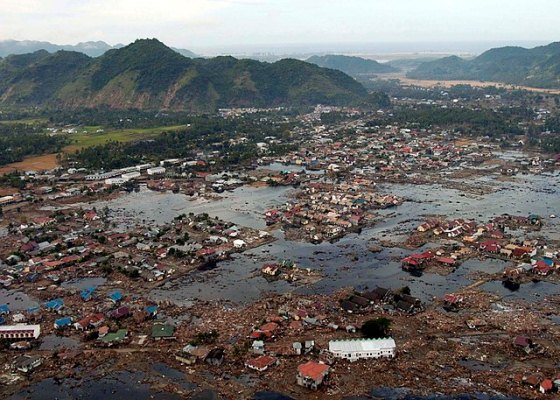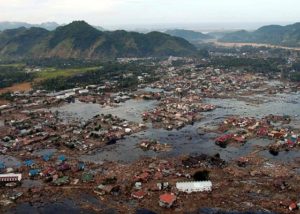
 About 40% of global economic losses from natural disasters occurring between 2015 and 2030 will be in Asia-Pacific, the most disaster-prone region in the world, according to the latest report by the United Nations Economic and Social Commission for Asia and the Pacific (ESCAP).
About 40% of global economic losses from natural disasters occurring between 2015 and 2030 will be in Asia-Pacific, the most disaster-prone region in the world, according to the latest report by the United Nations Economic and Social Commission for Asia and the Pacific (ESCAP).
The Asia-Pacific Disaster Report 2017 said natural disasters are becoming more frequent and intense, and disaster risk is outpacing resilience in Asia-Pacific.
In recent months, the region has seen Typhoon Hato unleash large-scale damage in Hong Kong and Macau that stretched all the way to Vietnam, along with torrential monsoon rains in Bangladesh, India, and Nepal that claimed more than 900 lives and affected another 41 million people.
The report shows that the greatest impacts of disasters are in countries which have the least capacity to prepare or respond to these events. Between 2000 and 2015, the low- and lower middle-income countries in the region experienced almost 15 times more disaster deaths than the region’s high-income countries.
“Asia and the Pacific is the region most affected by natural disasters which hit hardest at the poorest countries and communities. And on present trends, as more migrants crowd into slums and shanty towns in Asia-Pacific cities, whole communities are likely to see their homes and livelihoods shattered or washed away by the wilder forces of nature,” said the report.
Dr. Shamshad Akhtar, United Nations undersecretary-general and executive secretary of ESCAP, underlined that action on early warning systems is critical, and called for more innovative sources of disaster-risk financing to protect people’s livelihoods.
“Disasters can very quickly strip poor people of their livelihoods bringing deeply disruptive impacts that push them back into absolute poverty or trap them in an intergenerational transmission of poverty. Developing cost-effective financing is needed to decrease the existing resilience gaps,” said Akhtar, speaking at the launching of the report October 10.
“The absence of an institutionalized insurance culture and adequate post disaster financing threatens our extraordinary economic and developmental achievements. Promoting more, and deeper, collaboration among countries in the region on disaster risk financing will be an ESCAP priority. We have the opportunity to get it right and we cannot fail as millions of peoples’ lives and livelihoods depend on it,” she added.
Beyond the human costs, ESCAP research indicates that between 2015 and 2030, 40% of global economic losses from disasters will be in Asia and the Pacific, while the region accounts for around 36% of global GDP.
It also shows that future natural disasters may have greater destructive potential. The greatest burden of the losses as a proportion of GDP will be borne by developing small island states with average annual losses close to 4% of their GDP, while the least developed countries will have annual losses of around 2.5% of GDP.
ESCAP argues that measures for disaster risk reduction should take account of the shifting risks associated with climate change, especially in risk hotspots where a greater likelihood of change coincides with a higher concentration of poor, vulnerable, or marginalized people. Although interventions to reduce disaster risk cannot alone prevent conflict, they should be part of an integrated approach to conflict prevention and peace-building.
“Disaster resilience is a key element of the 2030 Agenda for Sustainable Development. The Sustainable Development Goals are based on the premise of reaching absolutely everyone. When the drought is assessed, when the flood warnings are broadcast, when the tsunami siren sounds, the aim is to ‘leave no one behind’. If governments are to fulfil this ambition, and protect their most vulnerable people, they will need to ground national development strategies firmly in disaster resilience,” said the report.
Photo: U.S. Navy photo




